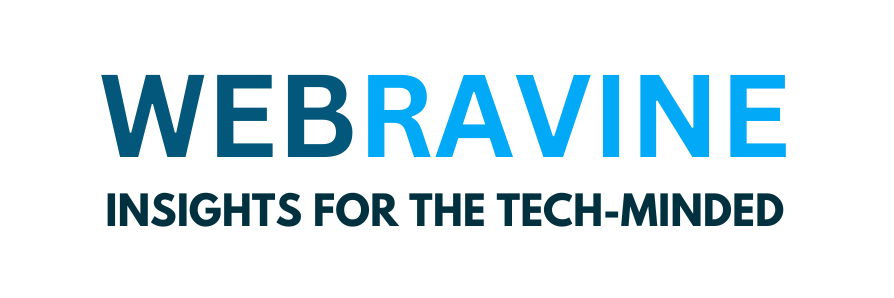Your Roadmap to Becoming a Web Development Pro.
Web development is an exhilarating and dynamic field that sparks endless opportunities for creativity and innovation. Whether aiming to craft your website, embark on a career as a web developer, or grasp the fundamentals, adhering to best practices is paramount. This guide will lead you through essential web development practices that every beginner should know, ensuring you commence your journey with inspiration and excitement.
1. Understand the Basics of HTML, CSS, and JavaScript
Before diving into complex frameworks and libraries, it’s essential to have a solid understanding of the core technologies that power the web: HTML, CSS, and JavaScript.
- HTML (HyperText Markup Language): This is the backbone of any website, providing the structure and content.
- CSS (Cascading Style Sheets): CSS is used to style and layout web pages, making them visually appealing.
- JavaScript: This programming language adds interactivity to your website, allowing you to create dynamic content.
Mastering these three technologies will give you a solid foundation to build.
2. Embrace Responsive Design
In today’s mobile-first world, ensuring your website looks and functions well on all devices is non-negotiable. Responsive design involves creating web pages that adjust seamlessly to different screen sizes and orientations.
- Use Flexible Grid Layouts: Utilize CSS frameworks like Bootstrap or Flexbox to create flexible grid layouts that adapt to various screen sizes.
- Media Queries: Implement CSS media queries to apply different styles based on the device’s characteristics, such as width, height, and orientation.
- Responsive Images: Use responsive images that adjust their size and resolution based on the device’s screen size.
By embracing responsive design, you’ll provide a better user experience and improve your site’s accessibility.
3. Optimize for Performance
Website performance is critical for user satisfaction and search engine rankings. Slow-loading websites can frustrate users and lead to higher bounce rates.
- Minimize HTTP Requests: Reduce the number of HTTP requests by combining files, using CSS sprites, and minimizing the use of external scripts.
- Optimize Images: Compress images without sacrificing quality to reduce load times. Tools like Ewww can help.
- Leverage Browser Caching: Enable browser caching to store static files locally, reducing the need for repeated downloads.
- Use a Content Delivery Network (CDN): CDNs distribute your content across multiple servers worldwide, reducing latency and improving load times.
Optimizing your website’s performance will enhance user experience and boost your SEO efforts.

4. Follow Semantic HTML
Semantic HTML involves using HTML elements that accurately describe their purpose and content. This practice improves accessibility, SEO, and maintainability.
- Use Proper Tags: Use tags like <header>, <nav>, <article>, and <footer> to define different sections of your web page.
- Descriptive Alt Text: Provide descriptive alt text for images to improve accessibility for screen readers and enhance SEO.
- Meaningful Class and ID Names: Use meaningful and descriptive class and ID names to make your code more readable and maintainable.
By following semantic HTML practices, you’ll create more accessible and search-engine-friendly websites.
5. Implement Version Control
Version control is essential for managing changes to your codebase and collaborating with other developers. Git is the most popular version control system used in web development.
- Learn Git Basics: Understand basic commands like clone, commit, push, and pull.
- Use GitHub or GitLab: Host your repositories on platforms like GitHub or GitLab to collaborate with others and showcase your projects.
- Branching and Merging: Use branching to work on new features or bug fixes without affecting the main codebase. Once changes are tested and approved, merge them back into the main branch.
Implementing version control will help you manage your code more effectively and collaborate with others seamlessly.
6. Prioritize Security
Web security is a critical aspect of web development that will always be noticed. Implementing security best practices will protect your website and its users from potential threats.
- Use HTTPS: Ensure your website uses HTTPS to encrypt data transmitted between the server and the user.
- Sanitize User Input: Validate and sanitize user input to prevent SQL injection and cross-site scripting (XSS) attacks.
- Keep Software Updated: Regularly update your web server, database, and third-party libraries or frameworks to patch security vulnerabilities.
- Implement Authentication and Authorization: Use secure authentication methods and role-based access control to protect sensitive website areas.
By prioritizing security, you’ll build trust with your users and protect your website from malicious attacks.
7. Stay Updated with Industry Trends
Web development is rapidly evolving, and staying updated with the latest trends and technologies is crucial for success.
- Follow Industry Blogs and News: Subscribe to popular web development blogs, newsletters, and forums to stay informed about the latest trends and best practices.
- Participate in Online Communities: Join online communities like Stack Overflow, Reddit, and GitHub to connect with other developers, ask questions, and share knowledge.
- Attend Conferences and Meetups: Participate in web development conferences, workshops, and local meetups to network with industry professionals and learn from experts.
By staying updated with industry trends, you’ll continuously improve your skills and stay ahead of the curve.
Conclusion
Starting your journey in web development can be both thrilling and challenging. Following these best practices will set a robust foundation for your career and help you create high-quality, user-friendly websites. Remember, continuous learning and improvement are not just suggestions; they are the keys to success in web development. Embrace the journey, stay curious, and keep building! This commitment to learning will keep you motivated and dedicated to your web development journey.
This guide helps you get started on your web development journey. Feel free to reach out if you have any questions or need further assistance. Happy coding! 😊


